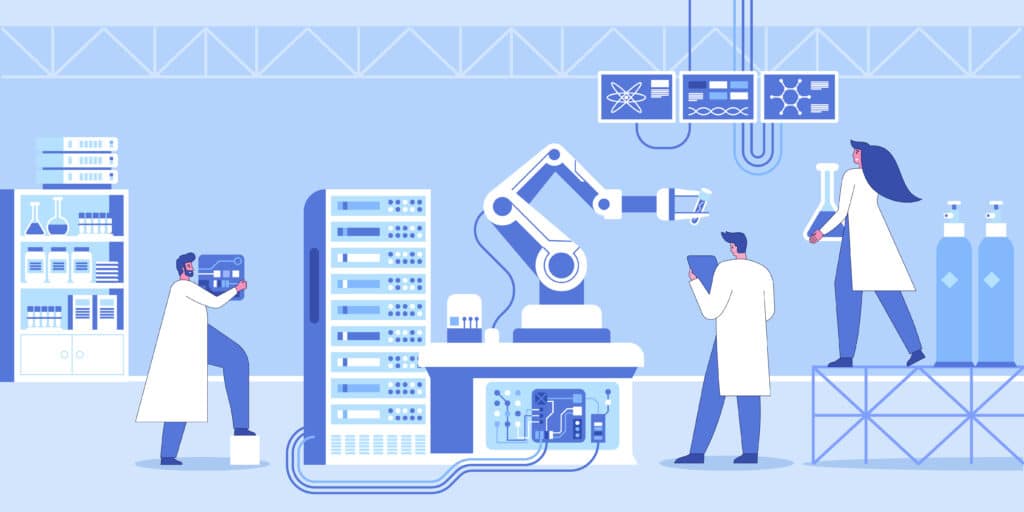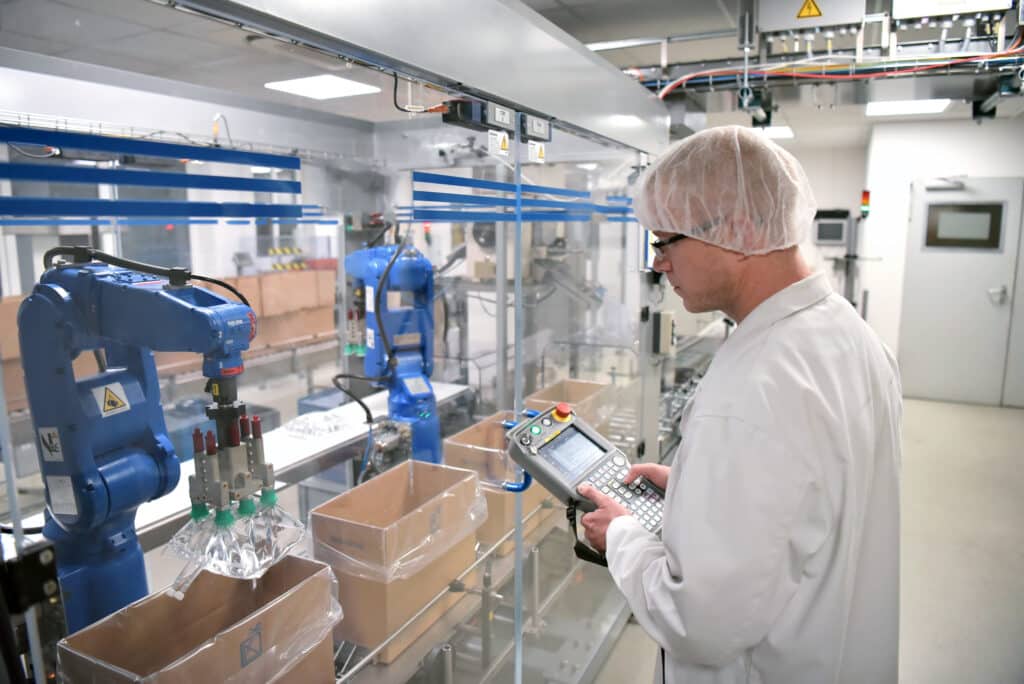In today’s dynamic world, industries are undergoing significant changes and companies must keep a constant eye on market developments and react quickly to current trends to remain competitive.
This is especially true for the manufacturing industry. A third of global greenhouse gas emissions come from manufacturing, forcing companies to rethink their operations and move toward low-carbon or carbon-neutral manufacturing. Increasing environmental, social, and governance factors are redefining and elevating sustainability in this sector. It is imperative that manufacturers embrace digital capabilities from corporate functions up to the factory floor if they wish to capture growth and protect long-term profitability.
The manufacturing world has been revolutionized by Industry 4.0, which offers manufacturers opportunities to use advanced tools and technologies throughout the product lifecycle. The advent of Industry 4.0 has enabled manufacturers to improve operational visibility, reduce costs, accelerate production times, and enhance customer service.

Challenges for the Pharma Industry
New technologies and digital solutions are integral for optimizing production and packaging processes. As the pharmaceutical industry has precise requirements and manufacturing guidelines, it can benefit greatly from technological advances made in industrial automation that increase the speed and accuracy of processes. Performance is heavily dependent on the stability of the material flow rate. In addition to reducing operational costs, automating processes can help pharmaceutical companies comply with strict regulatory and compliance standards.
Automation technologies represent an incredibly effective tool to improve the efficiency of pharmaceutical development and production by streamlining process steps. By using technologies, such as Electronic Batch Records (EBR) and locating technologies, automation solutions facilitate the tracing and tracking of pharmaceutical products. The development of IoT technology has enabled companies to enhance productivity by understanding the changing conditions within systems and analyzing them. It is imperative to have full, real-time visibility of where assets are located at every stage of the production process.
That being said, the pharmaceutical industry faces the challenge to manually record and preserve compliance documentation with regards to its products such as to document the exact sequence of each process steps carried out and identifying the deviation from the ideal process sequence becomes critical. Furthermore, there are no means to verify which worker has performed / monitored which batch manufacturing and whether that worker was qualified / authorized to perform that task.

The Solution
Several omlox members have joined forces to utilize the omlox standard as a new impetus for the creation of electronic batch records in the pharmaceutical industry. omlox – the world’s first open locating standard – enables the provision of location data, independent of the underlying locating technology and vendor, which significantly simplifies batch documentation in the production area of the pharmaceutical industry.
The architecture of omlox consists of three key components:
- omlox core zone – a zone defining an area with ultra-wideband (UWB) coverage that works in conjunction with open interfaces. This guarantees interoperability for all omlox-compatible UWB products, regardless of the manufacturer due to the standardized air-interface which defines how satellites and mobile units such as tags communicate.
- omlox complementary zones – additional zones defining all other locating technologies that are specified (such as RFID, Wi-Fi, BLE, 5G, GPS) in an interoperable manner.
- omlox hub – the locating middleware that harmonizes location data from any source (omlox zones). It transforms location data into standardized, global coordinates and provides it to any system or application via the standardized omlox hub API.
Real-time location technologies enable the precise localization of any moving object equipped with a tag. For this solution, TRUMPF Tracking Technologies provided their UWB technology that allows for centimeter-level localization even in complex indoor environments. Their real-time locating system (RTLS) emits a broadband signal and can calculate the relative position of a mobile transponder (tag) to several fixed base stations (satellites), independently of interference and other radio signals. This infrastructure forms the omlox core zone – one of the central components of the omlox standard.
Flowcate’s DeepHub (the premier omlox hub) aggregates the location information from the UWB RTLS and sends it to the ROTZINGER Manufacturing Execution System (MES) and Electronic Batch Record (EBR) system. Through the DeepHub, specific areas (geofences) can be defined within individual production areas that trigger configurable actions when a moving object enters or exists the defined area.
These events are sent to the MES/EBR systems to automate batch documentation and create a record that verifies that all necessary steps and compliance requirements have been met. These event triggers also help to authorize the entry of workers and moving objects into restricted areas. This enables the complete tracing of equipment in different process steps.
“Through this omlox-based solution, we are enabling our customers to have greater visibility into their dynamic production processes and automate them for a more streamlined, digital future.”
– Fabian Ritter, Product Manager at ROTZINGER PharmaPack
The DeepHub enables the visualization of all moving objects in real-time on the pharmaceutical shop floor through its dynamic dashboard. This is how the DeepHub, in conjunction with a state-of-the-art MES, enables streamlined documentation and traceability of human resources and work orders. As fence event triggers automate the documentation and process step records, they significantly improve the quality and back tracking of manufacturing process steps, making it possible to verify compliance. This solution was presented at ACHEMA 2022 and received acclaim from many attendees and the press.

The Learnings
Combining an MES with location data can be an extremely effective approach to enable process automation. Locating technologies are available in a wide range of technical and commercial capabilities. However, there is no one-size-fits-all solution, and each comes with its own advantages and disadvantages.
Missing interoperability of hardware and software components results in high and unpredictable costs associated with integration and operation. By standardizing location data, omlox fosters interoperable, vendor-independent, and cost-effective solutions.
One of the main benefits of using the omlox approach is that its interoperability allows for complete flexibility in terms of the infrastructure setup, as any location technology from any vendor can be integrated seamlessly. With omlox, manufacturers can adapt quickly to changes in market conditions or technology improvements in manufacturing.
This showcase has proven how a solution based on a standardized framework can have a massive impact on process automation and optimization in pharmaceutical manufacturing. By bridging the gap between hyper-accurate, real-time location information and manufacturing operations, the omlox standard is paving the way for a more streamlined and sustainable approach that will enable any infrastructure to become future-proof.
As the premier omlox middleware, the DeepHub plays a central role in any omlox-based solution by connecting the dots between the location technology layer and the application layer. Its multifaceted geofencing capabilities allow for a nearly endless variety of new use cases in industrial automation. For example, one possible extension to the showcase described above could be to add and utilize RFID technology to confirm the start and end of each manufacturing step in the same infrastructure. This could lower the total cost of ownership even further.
The synergy between omlox’s ecosystem of specialized and forward-looking partners fosters collaboration. We’re proud to actively contribute to the creation of new omlox-based solutions and are excited for what’s to come. If you would like to learn more about the DeepHub and other solutions that it has enabled, check out our website or visit our blog!
